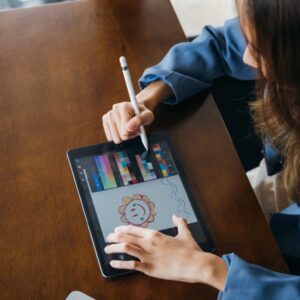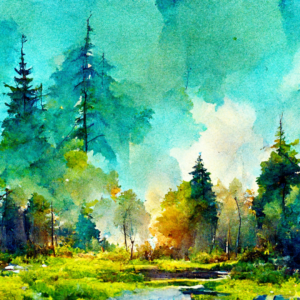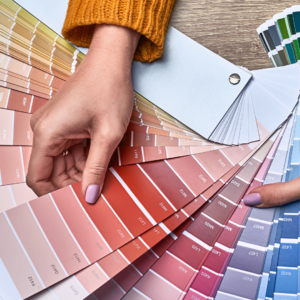The blend of traditional and modern mediums opens a world of creative possibilities for artists and enthusiasts alike. By combining the richness of classic techniques with contemporary innovations, creators can produce unique works that resonate with diverse audiences. This approach not only honors the history of art but also invites experimentation and fresh perspectives.
Artists today find themselves at a crossroads where age-old practices meet cutting-edge technologies. This interplay allows for exciting explorations, such as using digital tools to enhance hand-painted canvases or integrating sculpture with augmented reality. Engaging with both realms can help artists create pieces that are not only visually striking but also conceptually rich.
As the art landscape continues to evolve, embracing this fusion can lead to meaningful dialogues between styles and eras. Traditional techniques can inform modern practices, enriching the creative process and resulting in works that challenge viewers’ perceptions. The possibilities are vast when artists choose to traverse this dynamic terrain.
Historical Context of Art Mediums
Art mediums have evolved significantly over time, reflecting cultural shifts and technological advancements. Understanding these changes provides a foundation for exploring the blending of traditional and modern practices.
Evolution of Traditional Mediums
Traditional art mediums date back thousands of years. Early artists utilized natural materials such as charcoal, ochre, and plant-based dyes. These mediums were chosen based on their availability and the desired aesthetic effects.
Technologies like pottery and weaving emerged, allowing for more complex forms of expression. Paints were developed using pigments derived from minerals and organic substances, enabling a range of colors and styles.
Notable techniques included fresco in ancient Rome and oil painting in the Renaissance. Artists like Van Gogh and Rembrandt pushed the boundaries of traditional mediums, emphasizing texture and emotion. The evolution of these materials illustrates art’s adaptability to cultural contexts and technological advancements.
Rise of Modern Mediums
The late 19th and 20th centuries saw the rise of modern mediums, challenging traditional definitions of art. Innovations such as acrylic paint and synthetic materials expanded the palette available to artists.
New techniques emerged, including collage and assemblage, incorporating everyday objects and commercial materials. Artists like Pablo Picasso embraced these trends, pushing the boundaries of representation.
The advent of photography and digital technology also transformed artistic expression, leading to new forms of visual communication. These changes reflect a significant shift toward experimentation and individuality in art. Modern mediums cater to diverse artistic voices, expanding the definition of what constitutes art today.
Principles of Combining Mediums
The integration of traditional and modern mediums requires a keen understanding of their unique characteristics, a careful balance of contrast and harmony, and the application of specific techniques for effective integration. These principles can guide artists in creating cohesive and compelling artworks.
Understanding Medium Characteristics
Each medium has distinct properties that influence its use in artwork. Traditional mediums like oil paint and watercolor exhibit unique textures and drying times, while modern mediums such as acrylics and digital tools offer versatility and speed.
Key Characteristics:
- Oil Paints: Rich colors, slow drying time, and good blending capabilities.
- Watercolors: Transparent layers, quick drying, and fluidity.
- Acrylics: Fast drying, adaptability, and vibrant colors.
- Digital Tools: Flexibility, infinite edits, and instant feedback.
Artists must consider these characteristics when combining different mediums to ensure that the materials work well together and enhance the overall composition.
Balancing Contrast and Harmony
Combining traditional and modern mediums can create dynamic tension and visual interest. To achieve this effect, artists should work towards a balance of contrast and harmony.
Considerations for Balance:
- Contrast: Use of bold colors against muted tones, or smooth textures alongside rough surfaces can create visual excitement.
- Harmony: Choose complementary colors and similar forms to unify different elements within the artwork.
An effective combination allows the strengths of each medium to enhance one another without competing visually. This balance encourages viewers to engage with the artwork on multiple levels.
Techniques for Integration
Integrating various mediums requires specific techniques for a cohesive finish. Artists can employ layering, juxtaposition, and mixed media applications to combine the strengths of each medium.
Integration Techniques:
- Layering: Apply one medium over another, allowing for transparent effects or textural contrasts.
- Juxtaposition: Place traditional elements next to modern ones to highlight differences and provoke thought.
- Mixed Media Applications: Combine mediums in a single piece, using collage or assemblage techniques to enrich storytelling.
Skillful integration not only enhances aesthetics but also elevates the thematic depth of the artwork, inviting viewers to explore the relationship between traditional and modern art forms.
Creative Process and Workflow
The creative process of mixing traditional and modern mediums involves careful planning and innovative execution. It requires a balance between historical techniques and contemporary ideas to create engaging works.
Conceptualization and Planning
In the initial stage, an artist identifies the core concept by researching both traditional and modern mediums. This might involve studying traditional techniques, such as watercolor painting or ceramics, while exploring contemporary styles like digital art or mixed media.
Artists often create mood boards or sketches to visualize their ideas, ensuring a cohesive direction throughout the project. Tools like digital software can aid in experimenting with combinations before actual production.
Creating a timeline and setting milestones also helps keep the workflow organized. Artists should outline their objectives and the materials needed to ensure that they stay focused and efficient during execution.
Execution: Blending Traditions with Innovation
During execution, the artist combines techniques from both traditional and modern mediums. For instance, they might start with a foundational layer using acrylic paints, then add intricate details using digital tools.
Emphasizing the strength of each medium is essential. This can be achieved by allocating specific roles to traditional and modern elements—traditional techniques may provide texture, while modern technology can enhance colors or details.
The iterative process invites experimentation, allowing adjustments as the work develops. Feedback from peers or mentors can also influence decisions and lead to refinements. Maintaining flexibility in this stage encourages creativity and innovation, ultimately contributing to a richer finished piece.
Case Studies and Examples
This section highlights significant success stories in mixed media art and analyzes influential works that merge traditional and modern mediums. These examples demonstrate how artists creatively combine techniques and materials to produce compelling and innovative pieces.
Success Stories in Mixed Media Art
Artists like Robert Rauschenberg have led the way in mixed media. Rauschenberg famously employed techniques such as combining painting with sculpture and everyday objects, creating his iconic “Combines.”
Another notable example is Kara Walker, whose work often integrates cut-paper silhouettes with installations. Her pieces address complex social themes while merging traditional craft with contemporary commentary.
Yayoi Kusama also blends traditional painting with functioning installations. Her immersive spaces highlight the contrast between traditional art forms and modern narrative techniques.
Analysis of Pioneering Works
“The Dinner Party” by Judy Chicago serves as an essential example of incorporating craft and installation art. The piece elevates traditional needlework and ceramic arts while challenging historical narratives about women.
“Hopscotch” by the collective Slavs and Tatars merges text, sculpture, and performance, showcasing how language and play can intersect with cultural commentary. This blending challenges perceptions of art forms and their conventions.
The works of these artists reflect a vital dialogue between the past and present, pushing boundaries and redefining artistic expression. Each case illustrates how various mediums can coexist and enrich one another in meaningful ways.





